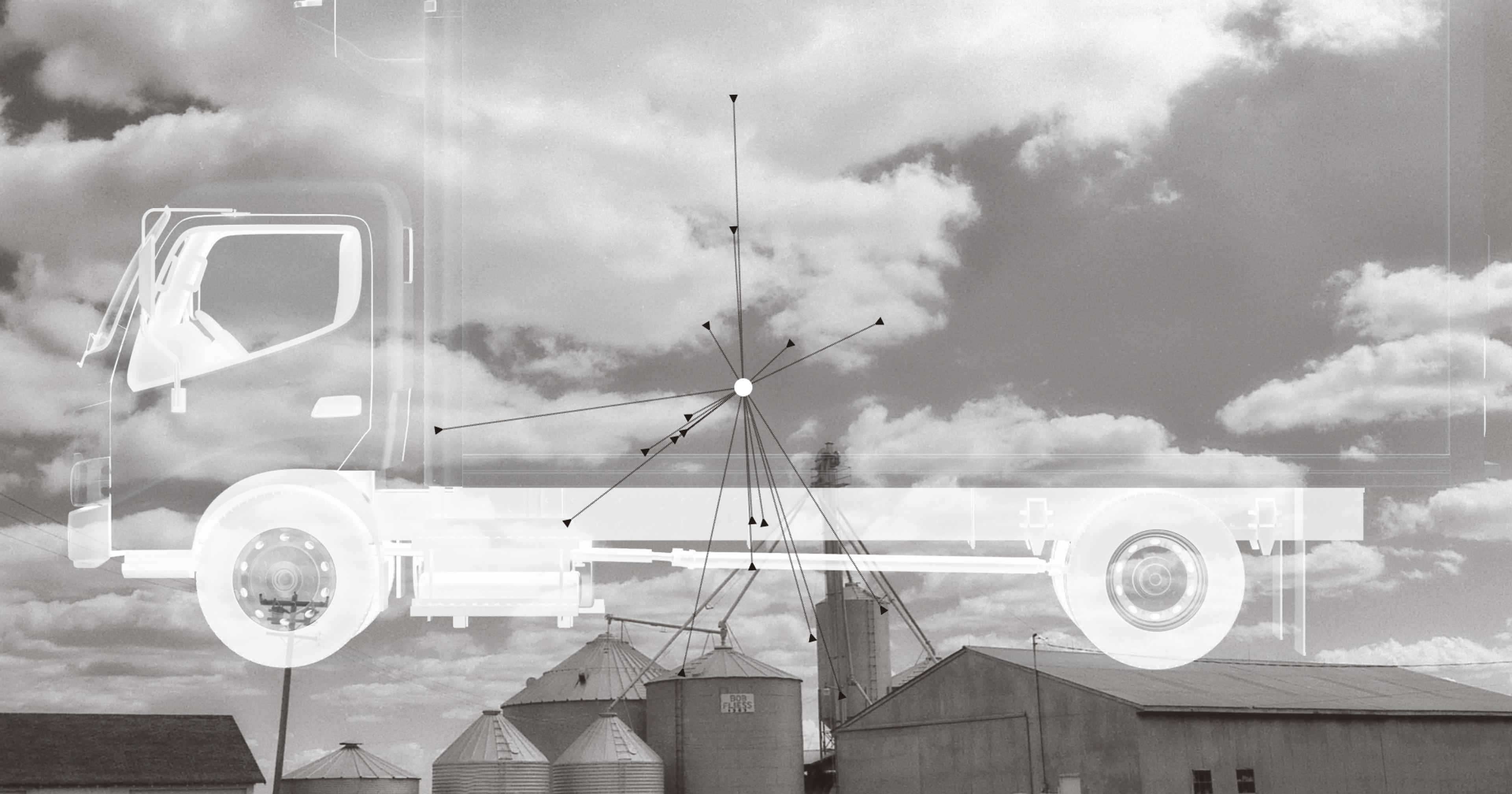A co-op of Wisconsin farmers now has its own trucking company — which could be one small way to shore up America’s ailing food supply chain.
While the average American likely understands that their food comes from farms, they probably aren’t focused on how — exactly — that food gets from a field to their kitchens. But for farmers, the transportation puzzle is often a core part of making the business work. Sure, you can grow 100 acres of corn, but where are you going to send that corn, and how are you going to get it there?
The answer almost always comes down to trucks, and the American agriculture industry depends heavily on the presence of the trucking industry to move products all the steps between field and market. But recently, some farmers have been complaining that trucking options can be either hard to find or prohibitively expensive — while at the same time, trucking hasn’t necessarily been easy for the drivers, who often face grueling work conditions and high job turnover.
In Wisconsin, one group of farmers is now pioneering a new model of agricultural trucking which, while imperfect, may offer hints at how to smooth out one of the core features of the country’s farm-to-table pipeline.
“The primary movement for food that’s eaten by human beings is via truck,” said Michelle Miller, an economic anthropologist at the University of Wisconsin. “That’s why it’s so important to have those trucking services.”
The Wisconsin Food Hub Cooperative, started in 2012, is a collective organization of farmers in the state, designed to help them get their products sold and marketed efficiently. Sarah Lloyd, a Wisconsin dairy farmer, supply chain researcher, and the cooperative’s director of development, said that the idea for co-op started when fresh produce farmers were “bumping into each other” at grocery stores as they sold their food. Each farm was individually responsible for its own sales and distribution to retail outlets, Lloyd said — but by banding together, the farmers could save time and money by selling and distributing produce as a unit.
This cooperation includes a lot of transportation logistics, and at first, the co-op contracted out all of their transportation needs. But by 2018, Lloyd said that they couldn’t find refrigerated trucking (vital for shipping produce) at a reasonable rate during the harvest season. So the co-op decided to start their own in-house trucking company, and now leases a few trucks and employs drivers full- and part-time to help ship their members’ produce.
The trucking and agriculture industries can butt heads in some fundamental ways. For one, agriculture is seasonal, meaning farmers are going to have a lot of shipping needs come harvest season and few shipping needs during the off-season — but truckers need employment year-round.
Some sectors of the trucking industry also go through these boom-and-bust cycles, where shipping rates go up and down as the trucking industry grows and shrinks, said Steve Viscelli, a sociologist at the University of Pennsylvania who’s done a lot of research on the trucking industry. When rates are high, that may be tough for agricultural producers, but that’s when trucking companies are booming — and vice versa, he said.
The Wisconsin Food Hub Cooperative’s trucking business model could reduce some of this friction. Each year, Lloyd said, the co-op helps their farmers forecast harvests and plan out trucking routes to pick up produce, eliminating some of the uncertainty. In addition, the trucking business is run at cost, or close to it, she added, reducing a lot of the overhead that might come with shipping through a traditional trucking business or a broker who would charge a connecting fee. During the off-season, the co-op’s trucking company takes on other, non-agricultural work to keep drivers on the payroll even when there’s no produce to move.
“We did not find evidence of a shortage of people interested in becoming truck drivers, but we did find strong evidence of a retention problem.”
One food supply chain problem may not be solved by this new model, however. Lloyd said that they’ve had trouble finding and retaining truck drivers, a sentiment that seems to be shared in other parts of the country. One recent story in New York, for example, talked to farmers who perceived a driver shortage. Dairy farmer Keith Kimball told Spectrum News that it even caused him to start trucking his own product. “We started hauling our milk about two years ago, and the main reason was because of the driver shortage,” Kimball said.
But Viscelli said that the current trucking labor situation is more complicated than a simple shortage of drivers. In the past, many truck drivers were union members, drove local or regional routes that got them home most nights, and made decent money. “They were excellent blue-collar jobs,” Viscelli said.
Today, a lot of drivers get their start in long-haul routes, which can be extremely demanding and difficult, with days or even weeks spent away from home — causing a lot of drivers to burn out of the industry, Viscelli added. So instead of a driver shortage, there’s really just a whole lot of turnover in the driver market, he said.
A recent study on agricultural trucking in California, which Viscelli co-authored, found this exact dynamic. “We did not find evidence of a shortage of people interested in becoming truck drivers,” the study noted, “but we did find strong evidence of a retention problem.”
This research was primarily focused in the long-haul section of the trucking industry, and a lot of these issues arose after the industry was deregulated in the 1980s—which may not have affected farmers quite so directly, since agricultural trucking has always been deregulated. But Viscelli said that the current system could hurt regional trucking markets if people who are interested in becoming truck drivers get pulled into this high-burnout, long-haul pipeline instead of taking a local trucking job. His recent study suggested that California develop truck driver training programs that could place drivers locally, which could feed both permanent and seasonal trucking needs.
Lloyd said that she’s not entirely sure what has led to driver turnover at the co-op. But she did note that their drivers mostly have daily routes to bring produce around the region instead of overnight, long-haul operations. Not only is this likely a better job for the drivers, keeping food systems regional is likely more sustainable all around — especially after the supply chain chaos that stemmed from Covid-19.
“The one silver lining of the pandemic is it really showed us how we can’t rely on these really big, brittle systems,” Lloyd said.
“Food is an essential part of people’s lives. From an economic development, economic vibrancy perspective, we need small- and medium-sized farms in our rural communities,” she said. “And we need the businesses that can support them.”








